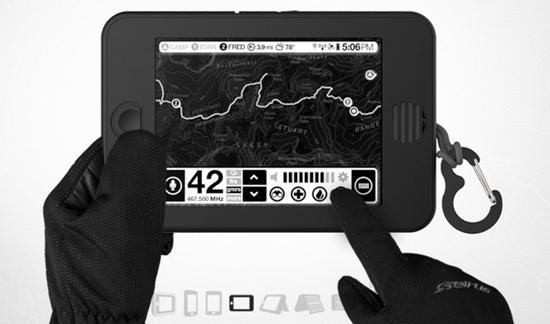
Did we pack the tent? Check! Cooler? Check! First Aid Kit? Check! Earl?
… Who?
You’ve probably never met him before today, but I would like to introduce you to him. He’s knowledgeable about the outdoors, eco-friendly, compact, and lightweight. Earl would be the first full-fledged Android tablet of its kind that’s currently in the funding stages of its production. It’s primarily used to work in “extreme” outdoor conditions where run-of-the-mill phones and tablets can’t function, and can make even the most environmentally impaired person (such as myself) a little more aware of their surroundings through the use of modern technology.
I find Earl to be an interesting and, for the most part, well-thought out product idea. As I just mentioned, I am not very wilderness-savvy, but I am tech-savvy! I enjoy the outdoors as much as the next person, but if you ask me to tell you the difference between a poison ivy plant and a plantain plant you’re probably going to end up with an undesirable result. While Earl might not be able to tell you what you can and cannot eat in the wilderness, it can do a lot of other useful things like utilize GPS maps, provide two-way radios for emergencies, and advise you of weather conditions all on one convenient 6” E Ink display device.
But that’s just some of the things Earl can do right off the bat. Earl is also a full-fledged Android tablet with WiFi and Bluetooth capabilities, which means you also would have access to the Google Play Store (so you could technically find an E-book which would inform you what the difference between plantain and poison ivy is, I imagine). You can also connect to the internet to share maps and connect with other explorers like yourself.
Some other notable features from Earl may be small, but significant for the type of tablet that it’s meant to be. For one thing, you can use Earl with any type of gloves – which is ironic considering Earl doesn’t work very well under freezing conditions (having an E Ink display and all). Earl also features a front-light, which can be used to see better in dark conditions or for use as a pseudo-lantern if you would like. Learning about current weather conditions is also no problem for Earl, even if you can’t connect to the Internet. Earl has a built-in thermometer for telling temperature, barometer for air pressure, hygrometer for humidity, and an anemometer for wind speed.
The best feature, in my opinion, is that the entire back panel of the device is a solar panel used for solar charging. It uses a 3,000 mAh battery and stays charged for 20 hours, and charges in just 5 hours via sunlight using high efficiency 18% mono crystalline solar cells. You can also charge Earl via USB if you happen to be around an outlet, but given that this device is primarily for outdoor use it makes sense to include solar charging as a main method for charging.
I really dig the concept of Earl, but at the same time you can tell the device is not perfect and there’s still one major problem with the device that could have been done better, and that’s the use of the E Ink display.
While E Ink is great for saving battery life, it’s not so great for dealing with harsher weather conditions. The page for Earl mentions that while it is dust, water, shock, and mud-proof, it’s only “reliable” in temperatures 0-50 degrees Celsius, which translates to 32-131 degrees Fahrenheit. While the upper temperatures are impressive, it’s no secret that E Ink displays don’t always work fantastically in freezing temperatures - which almost defeats the purpose of using this product anywhere but in warmer climates or during warm seasons. Given the high price that the company has given this product (about $325) that may hinder the amount of sales Earl will see.
Overall, I think this is a cool product and an interesting, fresh new way to use Android. With some tweaking and perhaps a decent price drop, I could definitely see this product becoming a popular gadget to use among campers and outdoorsmen in the future.
Readers, what are your thoughts on Earl? Would you take one of these with you on a camping trip, or would you rather take a cheaper, more traditional tablet? Or would you prefer to use more traditional methods?
Images via TechCrunch, Uncrate